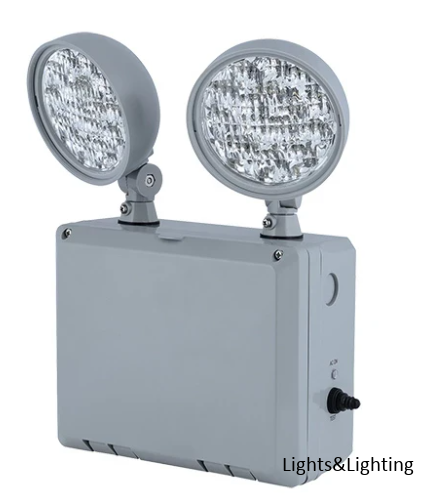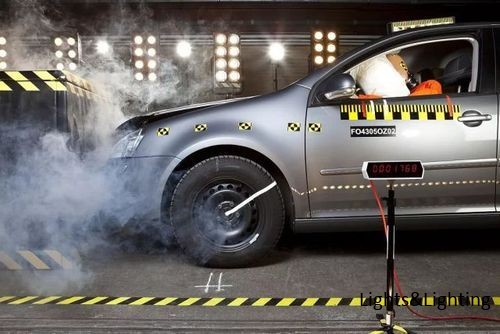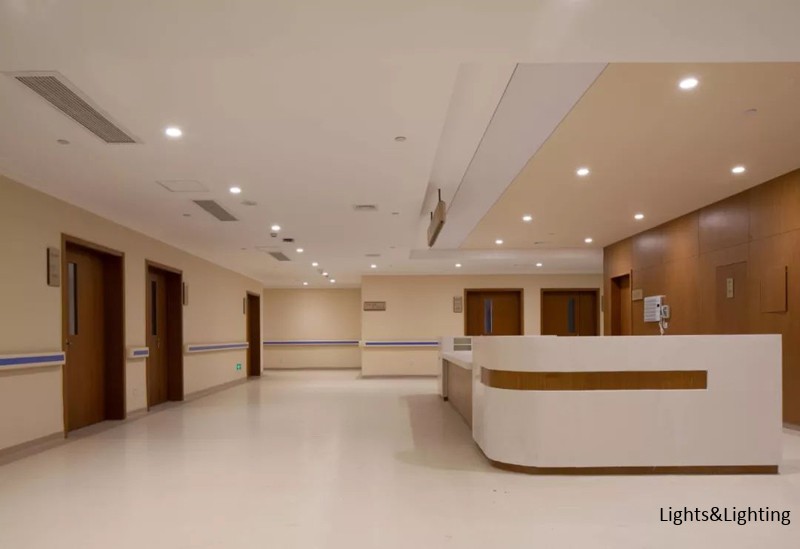Why is testing required for emergency lighting? Read this article to find out why state and federal laws require monthly check ups for fixtures and battery!Just as you would test drive a car before purchasing it, or test out a bed before buying it, it is also important to test your emergency lighting from time to time to be sure it can still do what it is intended to do -- save lives. NFPA 72 of the National Fire Protection Association Life Safety Code stipulates that emergency lights must be able to self-illuminate for 90 minutes following a power outage, the tripping of a breaker or in some cases the shutting off of lights by a switch in the areas served by the emergency lighting.
The Occupational Safety and Health Administration (OSHA) is another agency of the United States Department of Labor that sets standards that must be observed in the workplace to ensure a safe environment. OSHA's mission is to "assure safe and healthful working conditions for working men and women by setting and enforcing standards and by providing training, outreach, education, and assistance."

OSHA Requirements
OSHA has many regulations related to the workplace environment, but among the most important is their mandate that emergency lights and exit signs complete monthly and yearly tests of the backup battery system to make sure the fixture is ready to provide reliable illumination. Fixtures must be tested every month (90 second duration) and every year (90 minute duration). This can be a tedious and time consuming task, but is necessary to comply with safety codes and provide a safe work environment.
Emergency Light Testing
All emergency lights feature a simple push button for easy testing of the battery backup system. OSHA requries monthly and yearly tests.
There are stipulations as to how bright and how dark the light must be to appropriately illuminate the path. If the light is too dark it will not illuminate the path enough, if it is too bright, other parts of the path may appear too dark.
When to Test Emergency Lights?
You will want test your emergency lights when your business or factory is closed. If the emergency lights are in a residence, you will want to alert all household members to the fact that you will be testing the lights or at least make sure that they are not at home so that they are not alarmed.
If the lights are used in a business that is open 24 hours a day, you will want to warn patrons and employees before testing any emergency equipment and do it at a time when there are the least people in the building. You will want to contact your facilities manager to oversee the test or at least to recommend the best time and method for the test. If the test is in your home it is much easier to coordinate as there are fewer people involved.
What Should Be Tested?
6 volt 4.5 amp Emergency Light Battery - Sealed Lead Acid
Lead acid and nickel cadmium are the most popular types of emergency light batteries.
While there is equipment available to test batteries, it is not recommended that the emergency light battery alone be tested and then replaced into the unit.
It is important to test the entire system to see whether or not the breaking of the circuit will actually trigger the device. It is also important to notice whether the positioning and luminosity of the lights is sufficient and complies with all code regulations.
If the emergency light battery turns out to be the part of the lighting fixture that needs to be replaced, just figure out the type, voltage, and amperage of the battery.
Then, view our Emergency Light Battery category to find your replacement.
Tritium Technology
Luckily, there are ways to mitigate the frustration associated with these periodic tests. If a tritium or photoluminescent exit sign is installed, it is easy to check with no need for an official test - if it is providing light, it is ready to go at any time. These fixtures don't need to be tested because they are self-powered and do not use a battery pack. Tritium exit signs use the radioactive isotope of hydrogen by the same name to reliably illuminate EXIT for up to 20 years. When the tritium contained within within the tubes in the sign comes into contact with phosphor, it creates the green glow that lights up EXIT. The light emitted will comply with all the same codes as traditional exit signs, but does not require a battery to be maintained and replaced.
Glow in the Dark Fixtures
Another option is the photoluminescent exit sign. This fixture uses what is commonly referred to as glow in the dark technology to make EXIT glow when the lights are off. They absorb the light produced by incandescent and halogen lamps in the office when AC power is on and glow in the absence of light. This means that they are ready immediately, either at night or during a power failure. Although this exit sign has no electrical components, it is suitable only for indoor use because it absorbs only office lighting, while sunlight can ruin the fixture. It is easy to install, requires no maintenance, and sidesteps OSHA requirements.
Self-Testing Solution
Most emergency lights, ranging from the standard Emergency Light to the T Bar Recessed Emergency Light, have the capability to come installed with a self-testing feature. This takes the manual aspect of monthly and yearly tests out of the equation by performing automatic battery tests and displaying results on the side of the fixture. Different colored LED lights blink in specific patterns to indicate problems with the battery, circuit board, etc. Included literature helps the user decipher the meaning of the codes to quickly asses problems and correct them. This is much more efficient than manual tests because the maintenance team simply has to walk by the fixture and glance at the fixture's LED indicator to make sure everything is functional.
Emergency Light Testing Schedule
Indoor Emergency Light Unit White Housing
Plastic emergency lights come in a many styles and designs, some models cost less than emergency light batteries themselves!
It is important to set a schedule for testing emergency lights in your facility. This will ensure that they are tested regularly enough to function properly when needed.
Planning ahead will also allow you time to notify employees or family members of the test and to make sure you are familiar with the most updated code requirements.
It is important to write down on a calendar or enter into your phone or computer when you will perform the tests throughout the year. You can even schedule a reminder that will alert you to notify others that you will be testing the system.
Scheduling the test will also ensure that you will not forget to test them so that your emergency light are ready when you need them. The tests that OSHA require can be time consuming, but they ensure safety in the workplace. There is no surefire way to get around these requirements, but the fixtures listed above can make the process as pain-free as possible.







 Instant Messaging
Instant Messaging